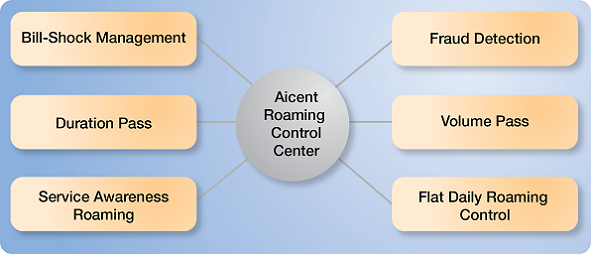People love their smart mobile devices and especially love the multitude of applications including those that keep them connected to the social world. As mobile subscribers become more nomadic, increasingly traveling beyond their home networks, the need to seamlessly access the myriad of data applications they have become accustomed to is increasingly more important.
This trend in mobile dependence while roaming does not seem to show any signs of slowing in the immediate or extended future. According to findings from Juniper Research, mobile data roamers will grow at a rate of 21% and generate around $35 billion in revenues for mobile operators by the year 2017, representing about 40% of their roaming revenues.
With these projections for the growth of mobile roamers, it is clear why most operators see data roaming as key revenue driver, but this growth has the potential to only exasperate the issues that continue to plague the roaming model. With unexpectedly high mobile bills resulting from the costs of roaming, many subscribers are opting to limit or even turn off their device’s access to data. This directly impacts the subscriber’s user experience while also affecting potential revenue for operators.
The need to move towards more intelligent data roaming is becoming more critical in order to maintain a positive user experience. By instituting real-time controls at both the operator and subscriber levels, detailed policies can be developed to help manage and set the criteria for how subscribers will roam, while offering subscribers the ability to make better decisions about their roaming plans and build customer satisfaction while generating increased ARPU (average revenue per subscriber).
Un-silencing the Silent Roamer
At the core of most roaming issues is the unexpected and dreaded mobile phone bill that contains surprisingly high data roaming charges. The reaction by subscribers to the monthly phone bill has been coined as bill-shock and is the catalyst for mobile subscribers deactivating their device’s roaming capabilities in essence becoming “silent” while roaming. This results in a couple of issues: The operator clearly misses out on revenue generating opportunities and the subscriber is faced with a poor user experience as they are limited in their ability to access voice, data, multimedia and other applications while traveling abroad. This can eventually result in subscriber churn as they search out alternate service plans that offer greater flexibility and cost savings while roaming.
In order to build more confidence with subscribers as well as mollify the growing interest by government communications agencies around the globe, mobile operators are realizing that changes need to happen. But how does an operator eliminate the general fear subscribers have about incurring excess roaming charges while at the same time offering greater control and flexibility at both the operator and subscriber level?
By implementing solutions designed to give greater insight into the roaming behavior of their subscribers, operators can provide data roaming service packages that save operating costs and generate new data roaming revenues. These tools include subscriber level controls built to enhance the roaming experience by offering safeguards against elevated roaming charges while allowing for the adjust of services based on usage or application requirements.
Aicent’s Roaming Control Center (RCC), was designed to offer operators greater insight into the behaviors of their roaming subscribers by allowing them the flexibility to develop detailed policies that help manage and set the criteria for how subscribers will roam with their mobile devices.

Let’s take for example a traveler stuck at the airport during an extended delay. Through Aicent’s RCC, operators can offer a series of limited data roaming packages with various quotas and at different price levels. These micro data roaming packages, can be aimed at the roaming subscriber looking for short term data pass based on a time or an established data quota, giving them either a specific time frame or data ceiling in which to roam without the fear of raking up high roaming fees.
The subscriber experience can further be enhanced with Aicent’s RCC by giving them more control over the specific applications they would like active while roaming. Examples would be email only, IM, or access to Facebook only roaming services. This package could also include the possibility of a combined offering all, designed to give the roaming subscriber access to the applications they need or want while limiting roaming charges, as well as network traffic.
Implementing Effective Policies
An important component of an LTE network is the policy and charging control (PCC) function, including the policy charging and ruled function (PCRF) that delivers dynamic control of policy and charging on a per subscriber basis. The costs and time involved with implementing a policy system can be extremely high, not the mention the time intensive. Depending on an operator’s current setup, this implementation could entail building a PCC system from scratch or altering their existing mobile core to facilitate the addition of key PCC modules.
These costs and complexities can be an insurmountable barrier for many operators. Aicent’s RCC allows operators to circumvent these issues by limiting the capital and operational expenditures necessary by an operator to offer expanded roaming control services. Through a single connection, Aicent can seamlessly offer a powerful PCC backend necessary to support robust roaming controls. Operators can quickly monetize their investments by providing customers with a variety of QoS and charging options when choosing a service.
Smarter Roaming
Ultimately, a mobile subscriber wants the flexibility to roam seamlessly between networks while maintaining some consistency around how they use their phones, whether it be for voice or to access data applications. With the introduction of new and advanced roaming control solutions, such as Aicent’s Roaming Control Center, operators have the tools available to offer their subscribers an enhanced roaming experience while eliminating bill shock and ultimately protecting their subscriber base.
For more information on Aicent’s Roaming Control Center visit www.aicent.com.